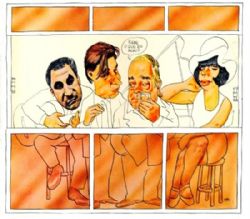
...or western civilization,
but the Brazilian variety was loved by the entire world while a military
dictatorship . . . a repressive regime . . .
 a
protest that slipped though the fingers of the Brazilian censors of those times
and appeared on the walls of every travel agency throughout the world as a
popular propaganda tool.
a
protest that slipped though the fingers of the Brazilian censors of those times
and appeared on the walls of every travel agency throughout the world as a
popular propaganda tool.
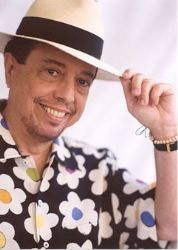 and sitting in with each other as they articulated their craft. Sergio Mendes and Abel Ferreira played
at those clubs and even I had the honor and pleasure to sit in with the house
bands while I was still a Navy Musician touring South America at that time.
Within these congregating points of interest to the bohemian intellectual, the
military police had strategically placed spies and informers to gather
intelligence about those artists who might be using this staging as a place to
criticize the very unpopular regime. Many a verbally active critic of the
government would be carted off in vans and buses. Some were tortured and
treated in a manner most Brazilians try forget about . . . as they should.
Things are so much different now in these modern times that one could only
think of that period as some foggy nightmare that could not have been true.
and sitting in with each other as they articulated their craft. Sergio Mendes and Abel Ferreira played
at those clubs and even I had the honor and pleasure to sit in with the house
bands while I was still a Navy Musician touring South America at that time.
Within these congregating points of interest to the bohemian intellectual, the
military police had strategically placed spies and informers to gather
intelligence about those artists who might be using this staging as a place to
criticize the very unpopular regime. Many a verbally active critic of the
government would be carted off in vans and buses. Some were tortured and
treated in a manner most Brazilians try forget about . . . as they should.
Things are so much different now in these modern times that one could only
think of that period as some foggy nightmare that could not have been true.

Chico
Buarque de Hollanda, Gilberto Gil, Jorge Bem were all rebels
of that time and suffered much for their art and to get the message out. Yet
that beautiful Bossa Nova still enchants us even today. I asked a journalist
friend who loves music as to why Brazilians didn’t adore the Bossa Nova as much
we do in other countries. He said, “The Bossa Nova was used to betray many
people during the ‘Time of Repression’ and it does not conjure up good memories
or nostalgia.” I won’t use him as the primary authority, but my research has
revealed much of the same explanation.
“The Black Orpheus” was the first internationally
acclaimed film (Winning the Cannes Film Festival) that made all of it’s Bossa
Novas and Sambas great hits. I believe that two composers wrote for that
film: Tom Jobim and Luiz Bonfá.
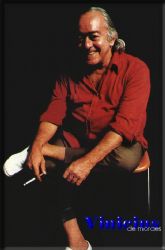
One little understood fact is that none of Jobim’s
music would have been as successful or as well loved without the lyrics. Jobim
stands alone as a composer, but if he weren’t first popular in Brazil his music
would not have traveled even one block out of his neighborhood. The lyrics sold
the music and Brazilians dutifully memorize these hits and sing along when and
wherever they are played or sung. Vinicius
de Moraes, Chico Buarque, and many more geniuses of the lyric are why the
music is sold. The rest of the world simply loves the melody, harmony and
rhythm.
One little known fact is that before the Bossa Nova
there was the Samba Canção (the song samba) which is not very much different
from the Bossa Nova other than its name and the musical progressions that were
used. So the staging and the time of this musical style could only be
attributed to its cultural and political significance.
In contradiction to all of the forgoing, Luis Bonfá wrote the ever popular
“Gentle Rain” way b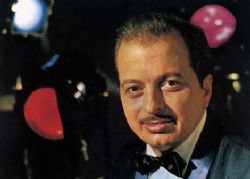 efore the style of the Bossa Nova was used or commercially
accepted. October 17, 1922 Luiz Bonfa was born in Rio de Janeiro and at the age
of twelve started to play the classical guitar (violão) and in 1939 at the age
of more or less seventeen he penned “Gentle Rain” and then had to wait until
more than 20 years later to renew the copyright and to make it available to all
of us. The melody has a sort of Debussy quality to this Cminor musical piece
that drones and undulates like a Classical Nocturne.
efore the style of the Bossa Nova was used or commercially
accepted. October 17, 1922 Luiz Bonfa was born in Rio de Janeiro and at the age
of twelve started to play the classical guitar (violão) and in 1939 at the age
of more or less seventeen he penned “Gentle Rain” and then had to wait until
more than 20 years later to renew the copyright and to make it available to all
of us. The melody has a sort of Debussy quality to this Cminor musical piece
that drones and undulates like a Classical Nocturne.
A composer never throws anything away and this is an
example of how this particular Bossa Nova evolved. This fact is little known to
most Brazilian musicians and it makes me proud to have found it on my own.
Google the title and listen to clips of this beautiful yet masterpiece.
Bonfa and Jobim had influenced many a young composer
and with my almost silly attempt to analyze the technique of writing the melody
of a bossa nova one must start with an unusual harmonic progression and while
adapting the prose of poem used by the lyricist let both melody and words
evolve together while using the tone centers represented by notes of
embellishment like the 13th’s, the augmented 11th’s. the 9th’s and the major
and minor 7th’s of the supporting minor chords in the progression of harmonies.
At the same time using different cycles of minor thirds, fifths, sixths and
chromatics . . . whew!!! . . . all the while testing the listener’s ear
training with less used inversions of the principle chords to effect a creative
bass line in all of this.
Well there it is . . . the secret to writing Bossa
Novas. It is actually the secret to writing any jazz standard. Then all we have
to do is determine the rhythmic interpretation to be applied.
Have I totally bored you? I just want to let know that
when a musician practices his trade he must develop many skills in order to be
proficient and prolific. Many Doctors have a practice.
Musicians have a legacy.
That being said and with this new information look up
the bossa nova as performed in Brazil and then download and listen to sound
clips of these following giants who are composers and performers alike:
• Luiz
Bonfá
• Lisa Ono
• Charlie Byrd
• Quarteto
em Cy
• Gal Costa
• Stan Getz
• Astrud
Gilberto
• Bebel
Gilberto
• João Gilberto
• Antonio
Carlos Jobim
• Nara Leão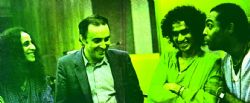
• Carlos Lyra
• Sérgio Mendes
• Newton Mendonça
• Roberto
Menescal
• Maysa Matarazzo
• Bob Tostes
• Jorge Ben Jor
• Eliane Elias
• Zoot Sims
• Henri Salvador
• Chico Buarque
• Milton
Banana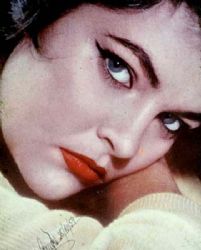
• Hermeto Pascoal
• Vinicius de Moraes
• Elis Regina
• Elza Soares
• Toquinho
• Marcos
Valle
• Rosa Passos